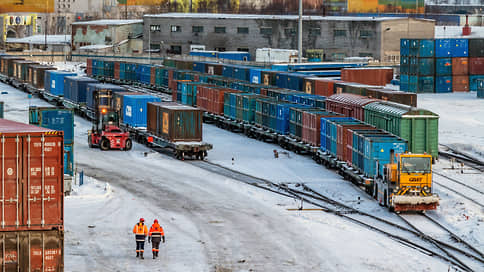Non-resource exports fell by almost a quarter
[ad_1]

The volume of non-resource non-energy exports (NNE) of Russia in 2023 decreased by 23%, to $146.3 billion, follows from a presentation by the Ministry of Industry and Trade. In 2022, the figure amounted to $190.4 billion, which was close to its peak value in 2021 of $194.2 billion. Let us recall that customs statistics on specific commodity items have not been published for a long time. From the presentation it follows that metal products in general accounted for 31.4% of non-raw material exports, mechanical engineering products – 19.1%, chemical products – 10.9%, and agricultural products – 18.8%.
Against the backdrop of a fall in the total volume of Russian exports in 2023 (minus 28.3%, from $592.5 billion to $425.1 billion, see Kommersant on February 13), the share of NOE in it increased from 28% compared to 2014 up to 35%. A more pronounced decline in total exports than in the case of NOE is a consequence of lower oil prices and the forced reorientation of supplies from the European market to the Asian market. After the introduction of the European embargo on the import of Russian oil and petroleum products (as well as increased restrictions on a number of other goods), Russian exports to Europe decreased from $265.6 billion to $84.9 billion (minus 68%). The growth of exports to Asian countries could not compensate for this decline – shipments increased by 5.6%, from $290.4 billion to $306.6 billion.
Now, in order to increase the volume of supplies, an increase in exports to “friendly” countries will be required – at the end of last year, the Ministry of Industry and Trade reported that the volume of NOE to Turkey increased by 36%, to China – by 26%, to Egypt – by 57%, to Brazil – by 37%, to Saudi Arabia – by 87%.
Note that not only the dynamics of Russian supplies are changing, but also the structure of global trade. From REC analytics it follows that in mechanical engineering the share of turnover of electrical devices is growing while the share of motor vehicles and watercraft is decreasing (probably this is a consequence of efforts to localize assembly), in the chemical industry there is a rapid increase in the share of fertilizers and pharmaceutical products (one and a half to two times over 20 years) , the share of copper in metallurgy supplies is growing (in 2020–2022 the shares of nickel, tin and other base metals also increased), in the agricultural sector there is an increase in the shares of grain, oils and fats, oil seeds and coffee, with a decrease in the turnover of tobacco, plants, fish and seafood, in the timber industry there is a decline in almost all positions with the exception of cellulose and some types of finished paper and cardboard products.
[ad_2]
Source link






